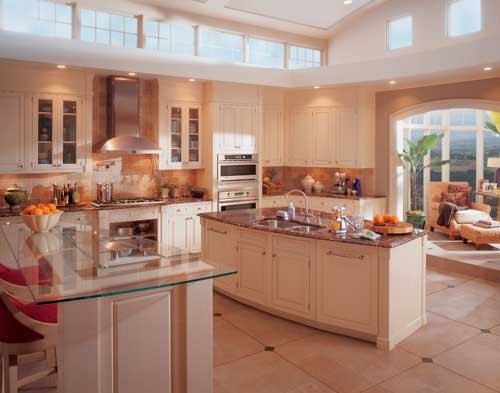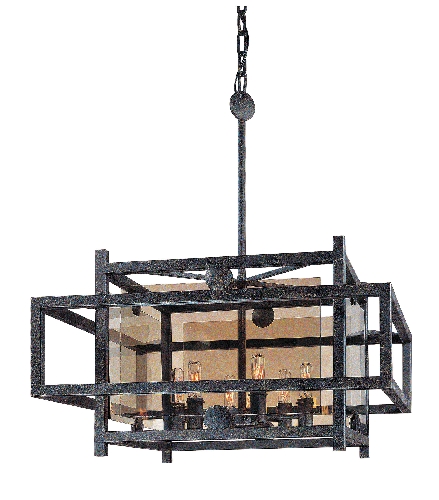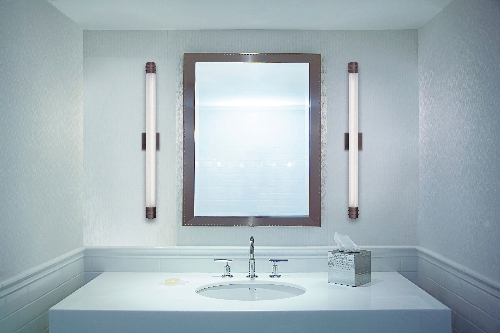Light up your life






Whether it be the flames of a prehistoric caveman’s fire, the flicker of a kerosene lamp or the glow from a modern compact fluorescent light, we have found ways to bring light into our homes after the sun sets. And with the end of daylight saving time Sunday, now is a good time to make sure there’s enough light in your home to brighten the dark winter days.
Lighting is one of the most overlooked and underrated aspects of interior design, according to Christopher Lowell, interior design and lifestyle television personality.
In his seven layers of design approach to decorating a room, lighting is the seventh layer.
"You need to think about lighting all through the layers and anticipate what your needs will be," he said during a recent visit to World Market Center Las Vegas where he spoke with retailers and designers about lighting.
According to Lowell, even though lighting is as crucial to a room’s overall look as selecting the furnishings and accessories, it’s often forgotten, missed or left out because of budget constraints. And considering that between 83 and 87 percent of your time at home is during nights and weekends, he doesn’t understand why lighting is so overlooked.
"People will do steps one through six and then wonder why their rooms don’t look as good as the ones on TV," he said. "The seventh layer, lighting, brings the room alive. You create exactly the mood you want through light."
And just as a room’s décor has layers, so does light, said Lowell, whose early career included a stint as a lighting technician for theatrical productions.
Kathy Presciano, a lighting specialist for GE, defines the three basic lighting types as general or ambient, task and accent.
"The first layer of light is general — or ambient — light. It is a general wash of light that allows you to see and walk safely throughout your home," she said.
Often created by chandeliers or lights recessed into the ceiling, general lighting — like all lighting in a room — should be on dimmers, Lowell said. You just need enough light to move around the room safely, he said, adding that the only time lights should be on 100 percent is when you are cleaning.
Another way to bring ambient light into a room is pin spots, he said. By creating areas of shadow, you bring drama into the room, establish a sense of intimacy and showcase the room’s best features. They offer enough light to allow a person to safely navigate around furnishings as well as define seating areas and walkways.
Task lighting provides intense light for a specific task, such as reading.
"It can be as simple as a table lamp or floor lamp or as elaborate as systems of fixtures that spotlight work surfaces. It can be built-in, like fluorescents under a cabinet to provide light for food preparation in the kitchen, or it can be exposed, like bulbs in a bathroom used for grooming," said Presciano.
For this reason, Lowell said lamps should be placed no more than one arm’s length away from your seating. This means you generally need more than one in a room, he added.
Both Lowell and Presciano recommend using three-way bulbs in table lamps so that light can be adjusted to each person’s needs and the task at hand.
Not only do table lamps provide necessary light, they can help define the style and mood of a room, Lowell said.
The final layer of light, accent or mood, is what sets the ambience.
A theatrical tool, accent lighting puts the focus on a specific location and draws your eye away from shadowy areas.
"Lighting is your very best friend. It puts the spotlight on what you love," Lowell said.
Presciano said accent lights should put five times more light on your target area than general light. The concentrated light can come from uplights, track fixtures, picture lights or recessed fixtures.
"Candlelight should not be ignored, Lowell said. "It offers the same dynamic as a fireplace. The flicker of flame adds great mood and animation to a space and can be placed anywhere."
"Lighting can be confusing because it is not something you can physically get a hold of. Its effect is hard to judge as it changes depending on where you put it and what surrounds it," said lighting design specialist Lucy Martin, whose book "The Home Lighting Effects Bible" comes out this month.
"A good lighting scheme involves the correct choice of light source, positioning it to best effect, combining it cleverly with other types of light, layering it to provide you with flexibility and, finally, controlling it to maximize the usefulness and impact," Martin said.
Her book, which is filled with numerous photo illustrations, defines the basics of lighting as well as offering tips on how to select the right fixture for the job and how to position it properly.
"A room is not finished until it’s lit up like a Christmas tree," Lowell said. "There’s no ‘wow factor’ until everything is plugged in."












